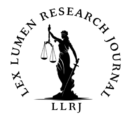Written By Anish Dobhal,
Intern- Lex lumen Research Journal,
January 2025
Introduction
Freedom of expression is recognized as a fundamental right in democratic nations and is protected by international and national human rights frameworks and constitutions. It is regarded as a fundamental component of individual freedom, political engagement, and intellectual interchange. However, the question of where to draw the line between defending free speech and preventing harm to others emerges when speech crosses the line into hate speech, which is speech that incites violence, judgement, or hostility towards individuals or groups based on traits like gender, race, or religion. Finding a balance between these two crucial rights is the difficult part.
What Constitutes Hate Speech?
Any statement, gesture, writing, or exhibit that incites hatred, violence, or prejudice against people or groups because of characteristics including race, religion, nationality, ethnicity, sexual orientation, or gender identity is considered hate speech. Although each nation has its precise legal definition of hate speech, it generally refers to any communication that incites animosity or prejudice against particular groups and causes harm to society.
In contrast to other types of speech, hate speech can incite violence, exacerbate social division, and weaken a community’s social cohesion. Because of this, controlling hate speech is a complex issue that requires consideration of the thin line separating protecting individual liberties from suppressing destructive sentiments.
The Value of Free Expression
One of the main pillars of democratic administration is freedom of expression, which is safeguarded by laws like the Universal Declaration of Human Rights[1] and the Constitution of India2. These enable people to participate in public conversation, voice their opinions, and criticize
authority without worrying about reprisals from the government. This right is essential to the growth of information, scientific advancement, and cross-cultural interaction in addition to political and social freedoms.Unrestricted freedom of speech has several advantages. It promotes the free exchange of ideas, which is essential for advancement and creativity. It gives people the chance to question established hierarchies, speak up against injustice, and support underrepresented groups. It is also crucial in democratic governance, as free discussion is required to make well-informed decisions. However, freedom of speech is not unqualified, just like any other right. Societies have acknowledged that communication can occasionally harm others, and there is constant discussion about how to strike a balance between preserving free speech and preventing harm.
Constitutional Provisions Regarding Hate Speech
Article 19(1)(a) of the Constitution of India enshrines freedom of speech and expression. But this right is subject to some reasonable restrictions[2], including those that prohibit hate speech, these restrictions can be imposed in the case of:
Sovereignty and integrity of the nation.
Security of The State
Friendly relations with foreign States
Public order
Decency and morality and many more
The Indian Penal Code, 1860 also contains mention of certain sections with provide punishment for the ones promoting hate speech, these are:
Punishment for those who promote enmity and hatred among different groups, committing acts that disturb public tranquility, etc.[3]
Prohibition of statements that are against national integration.[4]
Punishment for acts that deliberately outrage the religious feelings of a people.[5]
The Damage Caused by Hate Speech
Individual expression is protected by freedom of speech, but hate speech presents a special risk to social cohesion. Hate speech can have far-reaching and significant effects, even when the harm is not always immediately apparent. Using hate speech can result in:
Physical Violence: Hate speech can provoke physical violence or result in hate crimes, especially when it targets marginalized groups. As demonstrated in many instances around the world, inflammatory speech aimed at religious or racial minorities, for example, can incite violent attacks.
Psychological Harm: Long-term psychological repercussions, such as anxiety, depression, and trauma, may be experienced by hate speech victims. An individual’s sense of self-worth can be undermined by persistent vilification, particularly when it attacks highly personal features like identity, culture, or religion.
Social Division: Hate speech frequently divides individuals along political, religious, racial, or ethnic lines, causing polarization in society. A “we versus them” mentality that undermines social cohesiveness and lessens the likelihood of fruitful discussion can result from this split.
Discrimination: Hate speech often solidifies discriminatory views and perpetuates stereotypes. These viewpoints have the potential to become accepted by society over time, which would make it more difficult for excluded groups to obtain social acceptability and equality.
Lawsuits Against Hate Speech
Different strategies have been used by nations all over the world to control hate speech, frequently striking a balance between the right to free speech and the necessity of safeguarding people and communities. To solve this issue, many legal frameworks have been established:
Total Free expression: Some nations, like the US, understand freedom of expression in a way that is nearly total. Almost all forms of communication, including hate speech, are protected by the First Amendment unless they threaten immediate violence or disorder. The U.S. Supreme Court has repeatedly held that speech is protected unless it specifically calls for illegal conduct, regardless of how nasty or insulting it may be.
International Standards: National legal systems are guided by international standards developed by the European Union and the United Nations. For instance, the International Covenant on Civil and Political Rights (ICCPR) permits limitations on speech that incites violence or hatred while still acknowledging the right to freedom of expression.
Despite their differences, these strategies all share the conviction that the right to free speech must be balanced against the possible harm that could result from speech that incites violence or targets vulnerable groups unfairly.
Landmark Cases Regarding Hate Speech in India
In the case of Shaheen Abdullah v. Union of India (2022)[6] the Supreme Court directed the state government to take strict actions against hate speech
In the case of Ashwini Kumar Upadhyay v. Union of India (2021)[7] the Supreme Court allowed police to file FIR in cases of hate speech without waiting for complain.
In the case of Tahseen Poonawalla v. Union of India (2018)[8] the Supreme Court issued guidelines to prevent mob violence and lynching.
Conclusion
The tension between hate speech and freedom of speech is one of the most pressing challenges facing modern societies. While freedom of speech is a foundational right, the harm caused by hate speech—whether through incitement to violence, discrimination, or social division—requires thoughtful regulation. Striking the right balance is a delicate task that requires legal frameworks, technological tools, and public discourse that respect both individual freedoms and the need for social harmony.
Ultimately, the goal should be to protect people from harm while upholding the values of free expression. By doing so, societies can foster environments where ideas can be freely exchanged, and where individuals can live without fear of hatred or violence based on their identity.
References
India Const.
Indian Penal Code, 1860, § 153(a), No.45, Act of Parliament, 1860 (India).
Shaheen Abdullah v. Union of India (2022), Writ Petition (C) No. 940.
Ashwini Kumar Upadhyay v. Union of India (2021) 20 SCC 599.
Tahseen Poonawalla v. Union of India (2018) 9 SCC 201.
SCC Online, scconline.in (15th Jan. 2025).
iPleaders, https://blog.ipleaders.in/ (14th 2025)
[1] Universal Declaration of Human Rights, 1948, art. 19, No. 217 2 India Const. art. 19(1)(a).
[2] India Const. art. 19(2)
[3] Indian Penal Code, 1860, § 153(a), No.45, Act of Parliament, 1860 (India)
[4] Indian Penal Code, 1860, § 153(b), No.45, Act of Parliament, 1860 (India)
[5] Indian Penal Code, 1860, § 295, No.45, Act of Parliament, 1860 (India)
[6] Writ Petition (C) No. 940
[7] (2021) 20 SCC 599
[8] (2018) 9 SCC 201


